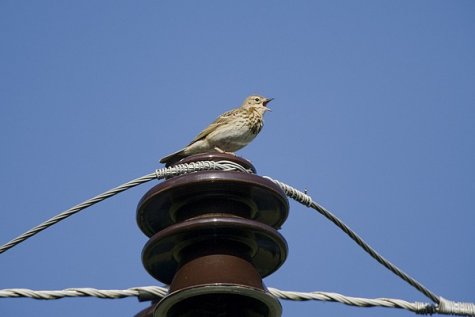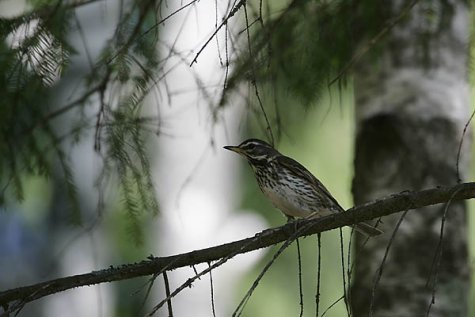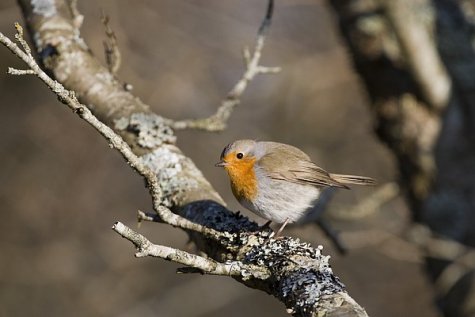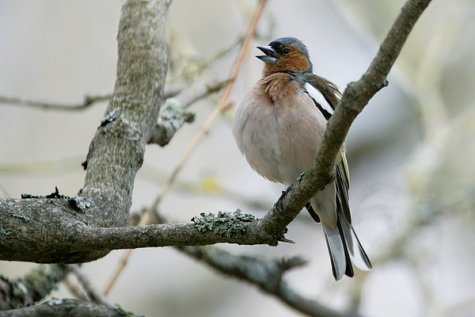Forest birds and their song - chiff-chaff
Our forests are brimming with bird song - there is indeed something to listen to. A series of simple everyday introductions of forest birds follows here, to make it easier to identify the birds by ear. The birds can be looked up on one single page, and compared.
The list of birds to be introduced is in the right-hand column in the table below.

| Chifff-chaff | Väike-lehelind |
You are missing some Flash content that should appear here! Perhaps your browser cannot display it, or maybe it did not initialize correctly.
|
Most common forest birds
Based on spot monitoring survey in Kaarepere forest, 1984-1992 |
In how many spots á 5 minutes must you listen to hear the species?
|
How many times is the bird heard during 5 mins.?
|
LK presentation order (non-migrant* + migrant birds)
|
|
Chaffinch - Metsvint
|
1
|
2,2
|
Great tit*
|
|
Willow warbler - Salu-lehelind
|
2
|
0,8
|
Goldcrest*
|
|
Wood warbler - Mets-lehelind
|
2
|
0,8
|
Great spotted woodpecker*
|
|
Chiff-chaff - Väike-lehelind
|
2
|
0,8
|
Treecreeper*
|
|
Tree pipit - Metskiur
|
2
|
0,7
|
Jay*
|
|
Robin - Punarind
|
2
|
0,6
|
Blackbird
|
|
Song thrush - Laulurästas
|
2
|
0,5
|
Chaffinch
|
|
Blackcap - Mustpea-põõsalind
|
2
|
0,5
|
Wren
|
|
Pied flycatcher - Must-kärbsenäpp
|
3
|
0,4
|
Song thrush
|
|
Wren - Käblik
|
3
|
0,4
|
Robin
|
|
Cuckoo - Kägu
|
3
|
0,4
|
Chaffinch
|
|
Garden warbler - Aed-põõsalind
|
4
|
0,3
|
Redwing thrush
|
|
Great tit - Rasvatihane
|
4
|
0,3
|
Tree pipit
|
|
Blackbird - Musträstas
|
4
|
0,3
|
Chiff-chaff
|
|
Goldcrest - Pöialpoiss
|
4
|
0,3
|
Willow warbler
|
|
Redwing - Vainurästas
|
4
|
0,3
|
Pied flycatcher
|
|
Collared dove - Kaelustuvi
|
4
|
0,3
|
Cuckoo
|
|
Siskin - Siisike
|
5
|
0,2
|
Wood warbler
|
|
Willow tit - Põhjatihane
|
5
|
0,2
|
Blackcap
|
|
Dunnock - Võsaraat
|
5
|
0,2
|
Garden warbler
|
|
Greater spotted woodpecker - Suur-kirjurähn
|
5
|
0,2
|
|
|
Treecreeper - Porr
|
Observed each year
|
||
|
Bullfinch - Leevike
|
Observed each year
|
Spot monitoring
|
|
|
Jay - Pasknäär
|
Observed each year
|
20 obs. spots
|
|
|
á 5 minutes
|

| Tree pipit |
Metskiur |
You are missing some Flash content that should appear here! Perhaps your browser cannot display it, or maybe it did not initialize correctly.
| Redwing thrush |
Vainurästas |
You are missing some Flash content that should appear here! Perhaps your browser cannot display it, or maybe it did not initialize correctly.
| Robin | Punarind |
You are missing some Flash content that should appear here! Perhaps your browser cannot display it, or maybe it did not initialize correctly.
| Song thrush |
Laulurästas |
You are missing some Flash content that should appear here! Perhaps your browser cannot display it, or maybe it did not initialize correctly.
| Wren |
Käblik |
You are missing some Flash content that should appear here! Perhaps your browser cannot display it, or maybe it did not initialize correctly.
| Chaffinch |
Metsvint |
You are missing some Flash content that should appear here! Perhaps your browser cannot display it, or maybe it did not initialize correctly.
| Blackbird |
Musträstas |
You are missing some Flash content that should appear here! Perhaps your browser cannot display it, or maybe it did not initialize correctly.

| Jay |
Pasknäär |
You are missing some Flash content that should appear here! Perhaps your browser cannot display it, or maybe it did not initialize correctly.
|
Treecreeper |
Porr |
You are missing some Flash content that should appear here! Perhaps your browser cannot display it, or maybe it did not initialize correctly.
| Greater spotted woodpecker | Suur-kirjurähn |
You are missing some Flash content that should appear here! Perhaps your browser cannot display it, or maybe it did not initialize correctly.
| Goldcrest |
Pöialpoiss |
You are missing some Flash content that should appear here! Perhaps your browser cannot display it, or maybe it did not initialize correctly.
| Great tit |
Rasvatihane |
The great tit stays in Estonia during the whole year. As the first bird it opens the spring season with its song: already in January its rhythmic ”sawing” begins; towards spring changing into the typical gaily sounding song „tsitsifüü tsitsifüü ...“ („sitsikleit sitsikleit“). (from the book, ”Eesti laululinnud – Estonian songbirds” by Rootsmäe and Veroman pp 215-216). Some individuals can imitate other birds. The register of calls is similarly very varied. Up to 50 different calls have been noted for the great tit. In the morning the great tit begins singing up to one hour before sunrise and stops in the evening a little after sunset.


















